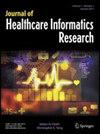Improving Risk Assessment of Miscarriage During Pregnancy with Knowledge Graph Embeddings
IF 5.9
Q1 Computer Science
引用次数: 4
Abstract
Miscarriages are the most common type of pregnancy loss, mostly occurring in the first 12 weeks of pregnancy. Pregnancy risk assessment aims to quantify evidence to reduce such maternal morbidities, and personalized decision support systems are the cornerstone of high-quality, patient-centered care to improve diagnosis, treatment selection, and risk assessment. However, data sparsity and the increasing number of patient-level observations require more effective forms of representing clinical knowledge to encode known information that enables performing inference and reasoning. Whereas knowledge embedding representation has been widely explored in the open domain data, there are few efforts for its application in the clinical domain. In this study, we contrast differences among multiple embedding strategies, and we demonstrate how these methods can assist in performing risk assessment of miscarriage before and during pregnancy. Our experiments show that simple knowledge embedding approaches that utilize domain-specific metadata perform better than complex embedding strategies, although both can improve results comparatively to a population probabilistic baseline in both AUPRC, F1-score, and a proposed normalized version of these evaluation metrics that better reflects accuracy for unbalanced datasets. Finally, embedding approaches provide evidence about each individual, supporting explainability for its model predictions in such a way that humans understand.应用知识图嵌入改进妊娠期流产风险评估
流产是最常见的妊娠损失类型,大多发生在怀孕的前12周。妊娠风险评估旨在量化减少此类孕产妇疾病的证据,个性化决策支持系统是高质量、以患者为中心的护理的基石,以改进诊断、治疗选择和风险评估。然而,数据稀疏性和患者级观察的数量不断增加,需要更有效的临床知识表示形式来编码已知信息,从而能够进行推理和推理。尽管知识嵌入表示在开放领域的数据中得到了广泛的探索,但在临床领域的应用却很少。在这项研究中,我们对比了多种嵌入策略之间的差异,并证明了这些方法如何有助于在怀孕前和怀孕期间进行流产风险评估。我们的实验表明,利用领域特定元数据的简单知识嵌入方法比复杂的嵌入策略表现得更好,尽管两者都可以在AUPRC、F1分数和这些评估指标的标准化版本中更好地反映不平衡数据集的准确性,从而与总体概率基线相比提高结果。最后,嵌入方法提供了关于每个个体的证据,以人类理解的方式支持其模型预测的可解释性。
本文章由计算机程序翻译,如有差异,请以英文原文为准。
求助全文
约1分钟内获得全文
求助全文
来源期刊

Journal of Healthcare Informatics Research
Computer Science-Computer Science Applications
CiteScore
13.60
自引率
1.70%
发文量
12
期刊介绍:
Journal of Healthcare Informatics Research serves as a publication venue for the innovative technical contributions highlighting analytics, systems, and human factors research in healthcare informatics.Journal of Healthcare Informatics Research is concerned with the application of computer science principles, information science principles, information technology, and communication technology to address problems in healthcare, and everyday wellness. Journal of Healthcare Informatics Research highlights the most cutting-edge technical contributions in computing-oriented healthcare informatics. The journal covers three major tracks: (1) analytics—focuses on data analytics, knowledge discovery, predictive modeling; (2) systems—focuses on building healthcare informatics systems (e.g., architecture, framework, design, engineering, and application); (3) human factors—focuses on understanding users or context, interface design, health behavior, and user studies of healthcare informatics applications. Topics include but are not limited to: · healthcare software architecture, framework, design, and engineering;· electronic health records· medical data mining· predictive modeling· medical information retrieval· medical natural language processing· healthcare information systems· smart health and connected health· social media analytics· mobile healthcare· medical signal processing· human factors in healthcare· usability studies in healthcare· user-interface design for medical devices and healthcare software· health service delivery· health games· security and privacy in healthcare· medical recommender system· healthcare workflow management· disease profiling and personalized treatment· visualization of medical data· intelligent medical devices and sensors· RFID solutions for healthcare· healthcare decision analytics and support systems· epidemiological surveillance systems and intervention modeling· consumer and clinician health information needs, seeking, sharing, and use· semantic Web, linked data, and ontology· collaboration technologies for healthcare· assistive and adaptive ubiquitous computing technologies· statistics and quality of medical data· healthcare delivery in developing countries· health systems modeling and simulation· computer-aided diagnosis
 求助内容:
求助内容: 应助结果提醒方式:
应助结果提醒方式:


